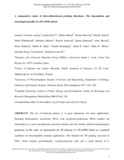JavaScript is disabled for your browser. Some features of this site may not work without it.
| dc.contributor.author | Gonzalez Ausejo, Jennifer | |
| dc.contributor.author | Rydz, Joanna | |
| dc.contributor.author | Musioł, Marta | |
| dc.contributor.author | Sikorska, Wanda | |
| dc.contributor.author | Sobota, Michał | |
| dc.contributor.author | Włodarczyk, Jakub | |
| dc.contributor.author | Adamus, Grażyna | |
| dc.contributor.author | Janeczek, Henryk | |
| dc.contributor.author | Kwiecień, Iwona | |
| dc.contributor.author | Hercog, Anna | |
| dc.contributor.author | Johnston, Brian | |
| dc.contributor.author | Khan, Habib R. | |
| dc.contributor.author | Kannappan, Vinodh | |
| dc.contributor.author | Jones, Keith R. | |
| dc.contributor.author | Morris, Mark R. | |
| dc.contributor.author | Jiang, Gouzhan | |
| dc.contributor.author | Radecka, Iza | |
| dc.contributor.author | Kowalczuk, Marek | |
| dc.date.accessioned | 2018-07-03T11:38:33Z | |
| dc.date.available | 2018-07-03T11:38:33Z | |
| dc.date.issued | 2018-04-17 | |
| dc.identifier.citation | Gonzalez-Ausejo J, Rydz J, Musioł M, Sikorska W, Sobota M, Włodarczyk J, Adamus G, Janeczek H, Kwiecień I, Hercog A, Johnston B, Khan HR, Kannappan V, Jones KR, Morris MR, Jiang G, Radecka I, Kowalczuk M, A comparative study of three-dimensional printing directions: The degradation and toxicological profile of a PLA/PHA blend, Polymer Degradation and Stability, Volume 152, June 2018, pp. 191-207 | en_UK |
| dc.identifier.issn | 0141-3910 | |
| dc.identifier.uri | http://dx.doi.org/10.1016/j.polymdegradstab.2018.04.024 | |
| dc.identifier.uri | http://dspace.lib.cranfield.ac.uk/handle/1826/13306 | |
| dc.description.abstract | The use of biobased plastics is of great importance for many applications. Blending thermoplastic polylactide (PLA) with polyhydroxyalkanoate (PHA) enables the formulation of a more mechanically powerful material and this enables tailored biodegradation properties. In this study we demonstrate the 3D printing of a PLA/PHA blend as a potential candidate for biocompatible material applications. The filament for 3D printing consisted of PHA, which contains predominantly 3-hydroxybutyrate units and a small amount of 3-hydroxyvalerate units, as revealed by multistage mass spectrometry (ESI-MSn). This research found that the properties of 3D printed species before and during abiotic degradation are dependent on printing orientation. Furthermore, the 3D printed specimens exhibited good biocompatibility with HEK293 cells, indicating real promise as biological scaffolds for tissue engineering applications. | en_UK |
| dc.language.iso | en | en_UK |
| dc.publisher | Elsevier | en_UK |
| dc.rights | Attribution-NonCommercial-NoDerivatives 4.0 International | * |
| dc.rights.uri | http://creativecommons.org/licenses/by-nc-nd/4.0/ | * |
| dc.subject | Three-dimensional printing | en_UK |
| dc.subject | Layer orientation | en_UK |
| dc.subject | Degradation | en_UK |
| dc.subject | (bio)degradable polyester | en_UK |
| dc.subject | Toxicity test | en_UK |
| dc.subject | Cell proliferation | en_UK |
| dc.title | A comparative study of three-dimensional printing directions: The degradation and toxicological profile of a PLA/PHA blend | en_UK |
| dc.type | Article | en_UK |
Files in this item
The following license files are associated with this item:
This item appears in the following Collection(s)
-
Staff publications (SWEE) [2825]

